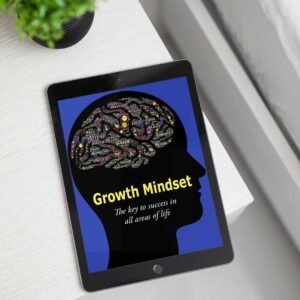The world of commodity trading, an integral thread in global economics, has experienced a profound transformation from its inception in ancient marketplaces to its current state in the digital age.
The journey from bartering goods on the Silk Road to executing trades on blockchain platforms encapsulates centuries of human innovation and adaptation.
This article, drawing from insights in The Renaissance of Commodity Trading: From Spice Routes to Smart Contracts, delves into this rich history, exploring the enduring principles and revolutionary changes that have shaped commodity trading.

The Dawn of Commodity Trading
Commodity trading’s roots can be traced back to ancient civilizations, where the exchange of goods like spices, silk, and metals was not merely an economic activity but a cornerstone of societal development. These ancient traders, navigating routes like the iconic Silk Road, were pioneers in managing risk and speculating on future prices.
Their practices laid the groundwork for modern trading strategies. They navigated through myriad challenges including supply chain disruptions, price volatility, and geopolitical tensions, echoes of which resonate in today’s trading world.
The intricacies of historical trade, as outlined in The Renaissance of Commodity Trading, reflect not just an exchange of goods but a profound influence on cultural exchanges, political power dynamics, and the creation of complex trade networks. These networks served as conduits for not only goods but also ideas, technologies, and cultures, weaving a rich mosaic of global interaction.
Transition to the Digital Age
The conversion from physical goods to digitized assets marks a pivotal evolution in the commodity trading saga. This shift, facilitated by advancements in technology and finance, has transformed the essence of trading. Modern digital platforms enable trading in futures, options, and tokenized commodities on the blockchain, mirroring the historical transition from barter to financial instruments.
The Role of Smart Contracts in Trading
Blockchain technology, especially smart contracts, has revolutionized commodity trading. By automating critical aspects of trading such as execution and settlement, smart contracts replicate ancient agreements but with modern-day efficiency and security. This innovation minimizes the need for intermediaries, drawing a parallel to how ancient traders would conduct business directly.
Data Analytics and AI in Modern Trading
The application of AI and data analytics in commodity trading today is akin to how ancient traders would forecast based on environmental and political signs. These modern tools provide unprecedented predictive insights into market trends and potential external impacts on commodity prices, enabling traders to navigate the market with enhanced precision.
Carbon Credits and Renewable Energy Certificates (RECs)
The trading of environmental commodities like carbon credits and RECs marks a significant shift toward sustainability in commodity trading. This evolution reflects the adaptation of the trading world to include commodities that, while intangible, have tangible impacts on the planet. These new forms of commodities represent an innovative blend of traditional trading practices with modern environmental consciousness.
Facing Challenges and Seizing Opportunities
Just as ancient traders had to adapt to the laws and customs of diverse territories, modern traders navigate a complex landscape of regulations that evolve with technological advancements. Adapting to regulatory changes, especially concerning digital assets and environmental commodities, remains a crucial challenge for traders.
Democratization of Market Access
The advent of digital platforms has significantly democratized access to commodity markets, mirroring the historical expansion of trade networks that once moved from the hands of a few elite traders to a broader populace. This democratization not only widens participation in commodity trading but also introduces a diversity of perspectives and strategies to the field.

Unlocking Profits in Commodity Trading: Strategies for Success and Pitfalls to Avoid
Trend Following: Many commodity traders use technical analysis to identify trends. By buying commodities that are trending upwards and selling those trending downwards, traders aim to profit from these movements. For instance, using moving averages can help in determining when to enter or exit a trade based on historical price patterns.
Spread Trading: This involves simultaneously buying and selling related commodity contracts to capitalize on the price difference. For example, trading the spread between crude oil and gasoline prices during different seasons can be profitable due to predictable demand changes.
Fundamental Analysis: Focusing on supply and demand fundamentals can lead to profitable trades. Knowledge of geopolitical events, weather patterns, and production reports (like the USDA reports for agriculture) can provide an edge. For instance, a drought might signal a future rise in grain prices due to expected lower yields.
Arbitrage: This strategy involves exploiting price discrepancies between different markets or forms of a commodity. An example would be purchasing crude oil at a lower price in one market while simultaneously selling it at a higher price elsewhere.
Leveraging Seasonal Patterns: Commodities like natural gas, heating oil, or agricultural products have predictable seasonal patterns. Buying during the low demand seasons and selling during high demand can yield profits if the patterns hold true.
Real World Example
A real-world example of trading psychology affecting commodity trading decisions can be seen in the behavior of a commodities trader during the oil price shock of early 2024.
When geopolitical tensions in oil-producing regions escalated, oil prices began to surge. A seasoned trader, let’s call him John, had been following these developments. However, instead of sticking to his well-researched trading plan which suggested buying on dips, John was influenced by the prevailing market panic and the fear of missing out (FOMO).
Reacting impulsively to the fear that oil prices would skyrocket without a pullback, John bought oil futures at what turned out to be near the peak. His decision was driven by the psychological pressure of ‘herd behavior,’ seeing many traders rushing to buy.
Shortly after his purchase, unexpected peace talks were announced, leading to a rapid drop in oil prices. John, realizing his mistake, sold at a loss, influenced by regret and the sunk cost fallacy, instead of reassessing the new information objectively. His initial emotional reaction led to a significant financial loss, showcasing how trading psychology can override even well-established trading strategies in the commodities market.
A Journey Through Time
The narrative of commodity trading is one of remarkable adaptability and innovation. From the ancient caravans traversing the Silk Road to the sophisticated algorithms governing today’s blockchain platforms, the fundamental principles of risk management, speculation, and adaptation to external factors have remained constant.
The Renaissance of Commodity Trading illuminates this journey, emphasizing that while the tools and technologies have evolved, the essence of trading—navigating the uncertain waters of supply and demand—remains unchanged.
This exploration underscores the intertwined nature of economic practices with technological and societal advancements. As commodity trading continues to evolve, facing new challenges and seizing emerging opportunities, it carries forward the legacy of its rich history into the future. The enduring relevance of commodity trading, from spice routes to smart contracts, showcases a dynamic field that continues to adapt, innovate, and thrive amidst the ever-changing tapestry of global economics.
Disclaimer: The information provided here is for educational purposes only. It does not constitute investment advice or a guarantee of performance. Investing involves risks, including the possible loss of capital. Seek advice from financial and tax professionals tailored to your financial circumstances and goals.















